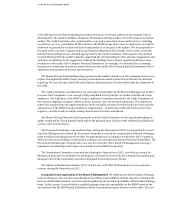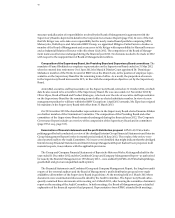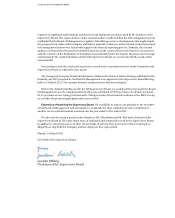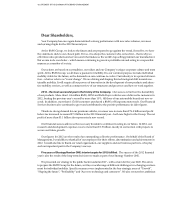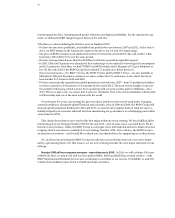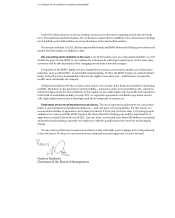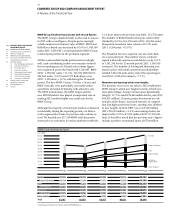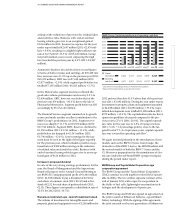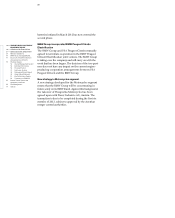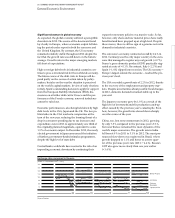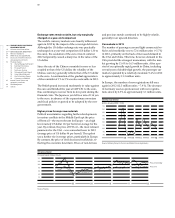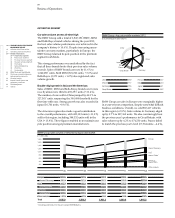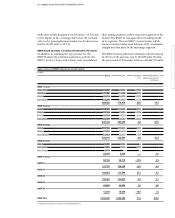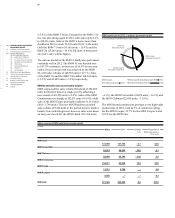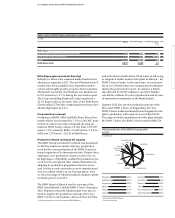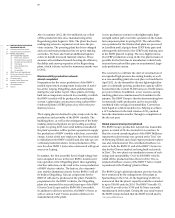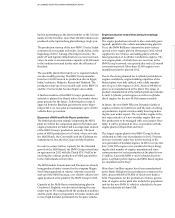BMW 2012 Annual Report Download - page 21
Download and view the complete annual report
Please find page 21 of the 2012 BMW annual report below. You can navigate through the pages in the report by either clicking on the pages listed below, or by using the keyword search tool below to find specific information within the annual report.
21 COMBINED GROUP AND COMPANY MANAGEMENT REPORT
Significant downturn in global economy
As expected, the global economy suffered a perceptible
downturn in 2012. The source of the downward trend
lay clearly in Europe, where economic output fell dur-
ing
the period under report in both the eurozone and
the United Kingdom. By contrast, the US economy
remained relatively stable throughout 2012 despite the
fact that the growth rate was still down on the historic
average. Growth rates in the major emerging markets
fell
short of expectations.
High sovereign debt levels in industrial countries
con-
tinue to pose a structural risk for the worldwide economy.
The future course of the debt crisis in Europe will de-
pend
partly on the course of action taken by
policy-
makers, but also on the way the situation is perceived
on the world’s capital markets. In view of early elections
in Italy, Spain’s outstanding decision to apply for support
from the European Stability Mechanism (ESM), dis-
cussions on a further debt cut for Greece and the per-
formance of the French economy, renewed turbulence
cannot be ruled out.
Economic performance is also being held down by high
debt levels in the USA, Japan and the UK. The two po-
litical sides in the USA reached a compromise at the
turn of the new year, reducing the looming threat of a
drop in consumer spending due to tax increases and
expenditure cuts in 2013 to approximately one third of
the originally planned magnitude, equivalent to some
1.5 % of economic output. In December 2012, the newly
elected government in Japan announced the initiation
of further government-funded stimulus programmes,
despite the high level of state debt.
Central banks worldwide have reacted to the risk of an
impending economic downturn by continuing their
expansive monetary policies on a massive scale. So far,
however, only share and raw material prices have really
benefited and been propped up at a high level. Despite
these moves, there is still no sign of a genuine revival in
demand in industrial countries.
The eurozone’s economy contracted overall by 0.4 % in
2012. Germany was the only major country in the euro-
zone that managed to register any real growth (+ 0.7 %).
France’s gross domestic product (GDP) practically stag-
nated at a rate of + 0.1 %. By contrast, Italy (– 2.2 %) and
Spain (– 1.4 %) slipped into recession. The UK economy –
Europe’s largest outside the eurozone – reached the pre-
vious year’s level.
The USA recorded a growth rate of 2.2 % in 2012, thanks
to the recovery of the employment and property mar-
kets. Despite uncertainties about possible fiscal changes
in 2013, domestic demand remained stable up to the
year-end.
The Japanese economy grew by 1.8 % as a result of the
high level of investment and the production catch-up
effect caused by the previous year’s catastrophe. Even
here, however, the growth rate slowed down sharply
over the course of the year.
China, too, lost some momentum in 2012, growing
by only 7.8 % compared to the previous year’s 9.3 %,
but nevertheless remained the most dynamic of the
world’s major economies. The growth rate in India
fell from 6.9 % in 2011 to 5.1 % in 2012. The most pro-
nounced slow-down was registered in Brazil, where
growth dropped to 1.1 % and hence to a mere quar-
ter of the previous year’s rate (2011: + 4.4 %). Russia’s
GDP also grew more slowly than one year earlier
(+ 3.4 %).
General Economic Environment
Exchange rates compared to the euro
(Index: 31 December 2007 = 100)
140
130
120
110
100
90
80
70
08 09 10 11 12
Source: Reuters
British Pound
Chinese
Renminbi
Japanese Yen
US Dollar


